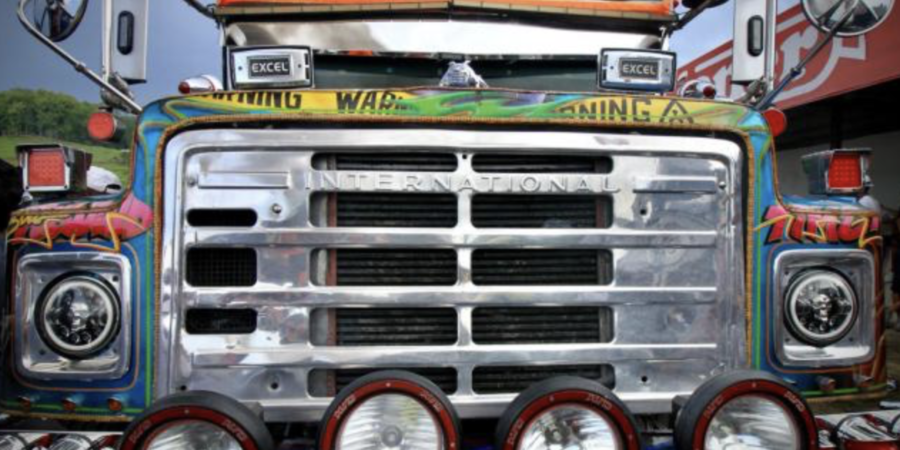First impressions matter and diablos rojos (“red devil”) buses make bold introductions. A riot of colors and images streaks down the street with booming bass and flashing lights. Everyone looks up when a diablo passes. After clambering up metal stairs, passengers are immediately hypnotized by a giant flatscreen blasting the latest Veejay mixes. The bus’s crisp leather seats are cool to the touch and merciful to a languid body melting in the Panamanian heat. The engine emits a bestial roar. Amid government efforts to modernize Panama City, diablos face the risk of being phased out and fully decommissioned. Some local residents, however, remain staunch defenders of these iconic buses.
Like many things in Panama, this story starts with the Canal. One of the most complicated infrastructure projects in human history, it carved a 50-mile maritime highway uphill and downhill through a malarial rainforest. In 1903, Panama declared its independence from Colombia and the United States took control over canal construction, importing vehicles, tools, and workers.
Most migrant workers originated in the Anglo-Caribbean—particularly Barbados—adding a sizable English-speaking, Black population to the preexisting Hispanic-mestizo country. Chinese, Indians, Arabs, Europeans, and Americans all flocked to the capital, converting a provincial city into a cosmopolitan metropolis. Political and intellectual elites (la ciudad letrada) lamented the loss of their idealized Panama—a land of pueblitos punctuated with festivals. For them, panameñidad was Spanish-descended settlers raising cattle and working the land. The Azuero peninsula epitomized this romanticized heartland. The corridor along the canal transformed into something different—urban, outward-looking, and commercial. Its beating heart has one name—la Ciudad.
